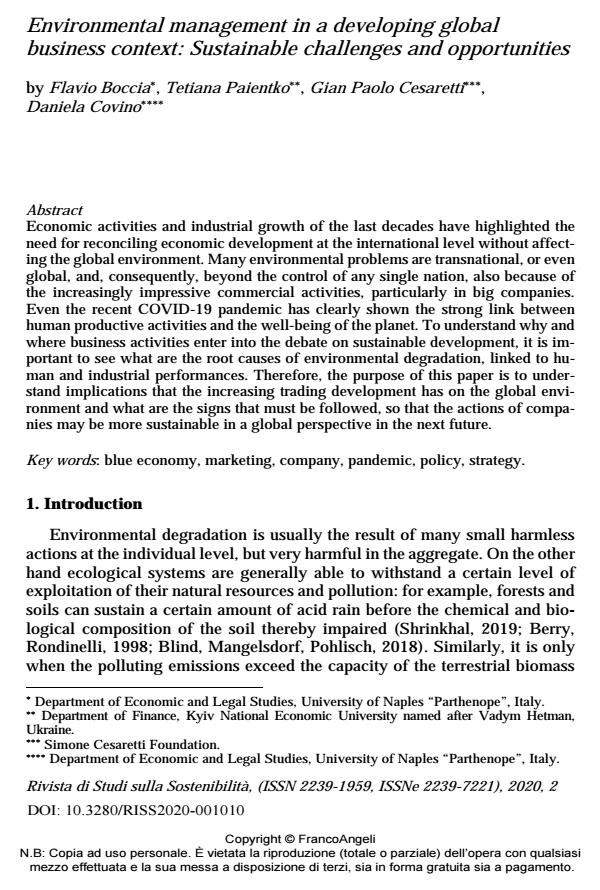Environmental management in a developing global business context: Sustainable challenges and opportunities
Journal title RIVISTA DI STUDI SULLA SOSTENIBILITA'
Author/s Flavio Boccia, Tetiana Paientko, Gian Paolo Cesaretti, Daniela Covino
Publishing Year 2021 Issue 2020/2
Language English Pages 15 P. 179-193 File size 134 KB
DOI 10.3280/RISS2020-002010
DOI is like a bar code for intellectual property: to have more infomation
click here
Below, you can see the article first page
If you want to buy this article in PDF format, you can do it, following the instructions to buy download credits

FrancoAngeli is member of Publishers International Linking Association, Inc (PILA), a not-for-profit association which run the CrossRef service enabling links to and from online scholarly content.
Economic activities and industrial growth of the last decades have highlighted the need for reconciling economic development at the international level without affecting the global environment. Many environmental problems are transnational, or even global, and, consequently, beyond the control of any single nation, also because of the increasingly impressive commercial activities, particularly in big companies. Even the recent COVID-19 pandemic has clearly shown the strong link between human productive activities and the well-being of the planet. To understand why and where business activities enter into the debate on sustainable development, it is important to see what are the root causes of environmental degradation, linked to human and industrial performances. Therefore, the purpose of this paper is to understand implications that the increasing trading development has on the global environment and what are the signs that must be followed, so that the actions of companies may be more sustainable in a global perspective in the next future.
Keywords: Blue economy, marketing, company, pandemic, policy, strategy.
- Financial assessment of the costs of exploration and evaluation of natural resources: Addressing environmental inequalities through sustainable mineral exploration and evaluation practices Farida Yerdavletova, Onaikhan Zhadigerova, Aliya Shakbutova, Myrzabike Zhumabayeva, Asset Kyzdarbekova, in RIVISTA DI STUDI SULLA SOSTENIBILITA' 2/2024 pp.71
DOI: 10.3280/RISS2024-002005
Flavio Boccia, Tetiana Paientko, Gian Paolo Cesaretti, Daniela Covino, Environmental management in a developing global business context: Sustainable challenges and opportunities in "RIVISTA DI STUDI SULLA SOSTENIBILITA'" 2/2020, pp 179-193, DOI: 10.3280/RISS2020-002010